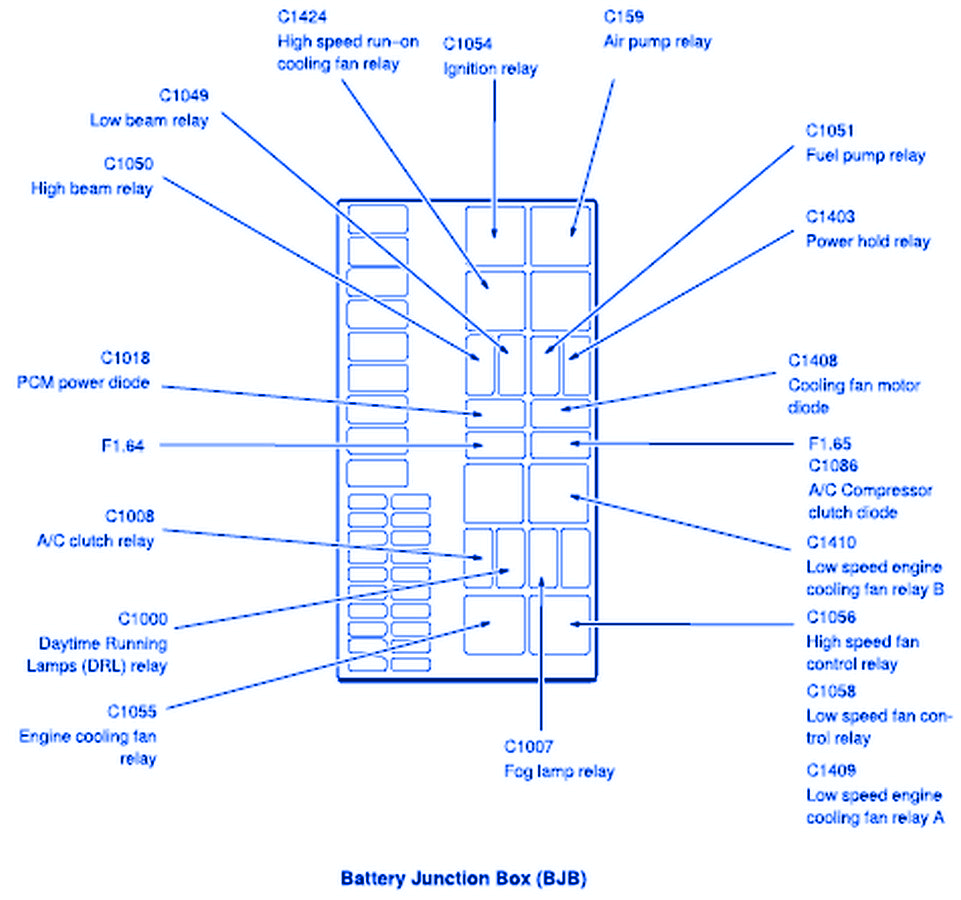Ever stared at your car’s fuse box, feeling like you were staring at hieroglyphics? The maze of wires and tiny fuses can seem intimidating, especially if you’re not a mechanic. But fear not! The 2004 Ford Focus fuse box layout, while intricate, is actually quite straightforward once you understand its logic. This article will guide you through the intricacies of the 2004 Ford Focus fuse box diagram, empowering you to decipher its secrets and become your own car’s electrical troubleshooting guru.

Image: wirewiringcatherine.z19.web.core.windows.net
Knowing where each fuse resides in the 2004 Ford Focus fuse box diagram is crucial for efficient troubleshooting. This diagram is essentially a map to your vehicle’s electrical system, providing vital information about the fuse layout and the components each fuse protects. Whether you have a dead headlight, a malfunctioning radio, or a power window that won’t cooperate, understanding how to navigate the fuse box diagram can save you time, money, and a lot of frustration.
Unveiling the 2004 Ford Focus Fuse Box
The Power Behind the Scenes
The 2004 Ford Focus fuse box is located in the passenger compartment, usually under the dashboard near the glove box. This placement ensures easy access for repairs or replacements. The fuse box itself is a plastic container containing rows of fuses arranged in a specific order. Each fuse is a small, cylindrical device with a metal strip inside. This strip acts as a conductor, allowing electricity to flow through it. If too much current passes through the fuse, the metal strip melts, breaking the circuit and preventing damage to other components.
Two Main Fuse Box Locations
The 2004 Focus has two distinct fuse box locations: the Passenger Compartment Fuse Box and the Engine Compartment Fuse Box. Each location serves a specific set of electrical components. The Passenger Compartment Fuse Box primarily manages interior components, while the Engine Compartment Fuse Box protects exterior elements like headlights and engine systems.

Image: www.carfusebox.com
Deciphering the 2004 Ford Focus Fuse Box Diagram
Understanding the Layout
The fuse box diagram is typically printed on a sticker located inside the fuse box cover. It may also be found in the owner’s manual. The diagram displays the fuse layout, with each fuse labeled with a number and a corresponding component or system it protects. For instance, you might see “FUSE 10 – HEADLIGHTS” or “FUSE 15 – RADIO.” To determine which fuse is responsible for a specific component, you’ll need to refer to the diagram and match the component name to the fuse number.
A Visual Guide
The diagram often includes a visual representation of the fuse box, showing the exact location of each fuse within the box. This visual aid helps you locate the correct fuse quickly and efficiently. For example, the diagram may indicate that fuse 10 is the second fuse from the left in the top row. This visual cue makes the process intuitive, removing any guesswork.
Troubleshooting with the 2004 Ford Focus Fuse Box Diagram
Identifying the Problem
If a component in your 2004 Ford Focus isn’t working, the first step in troubleshooting is to suspect a blown fuse. To test a fuse, simply use a test light or a multimeter. If the fuse is blown, the metal strip inside will be broken or melted. Remember, safety is paramount when working with electricity. Always disconnect the battery before working on any electrical components in your vehicle.
Replacing a Blown Fuse
Once you’ve identified a blown fuse, replacing it is a simple process. You’ll need to locate the corresponding fuse in the box using the diagram as a guide. Ensure you use a fuse with the correct amperage rating. Replacing a fuse with one of a higher amperage rating can damage your electrical system or even cause a fire. Check the fuse box cover or owner’s manual for the correct amperage rating for each fuse.
Beyond the Basic: Advanced Troubleshooting
Understanding Electrical Circuits
While the fuse box diagram is a good starting point, it’s important to understand the basics of electrical circuits. A simple circuit involves a power source (your car’s battery), a load (the component you’re trying to power), and a conductor (wiring). A fuse acts as a safety device within the circuit, breaking the flow of electricity if the load draws more current than the fuse can handle.
Using a Multimeter
For more advanced troubleshooting, consider using a multimeter. This versatile tool can test the voltage, current, and resistance of your electrical system, allowing you to pinpoint the source of an electrical problem with greater precision. It can even help you diagnose issues with wiring or components that might require further repairs.
Staying Safe: Electrical Safety Tips
Never work on electrical components while the vehicle’s engine is running. Always disconnect the battery to avoid the risk of electric shock. When working on electrical systems, use insulated tools and wear safety goggles to protect yourself from potential hazards.
04 Ford Focus Fuse Box Diagram
Conclusion
Mastering the 2004 Ford Focus fuse box diagram is a valuable skill for any car owner. It equips you to handle simple electrical issues with confidence and avoid unnecessary trips to the mechanic. Remember, prevention is key. Regularly check your fuses for signs of wear and tear, and replace them as needed to prevent potential problems. By understanding the basics of electrical systems and using the fuse box diagram as a guide, you can keep your 2004 Ford Focus running smoothly and safely.





